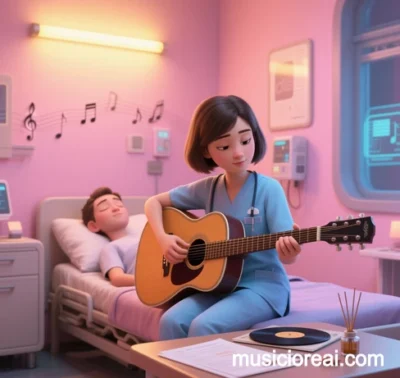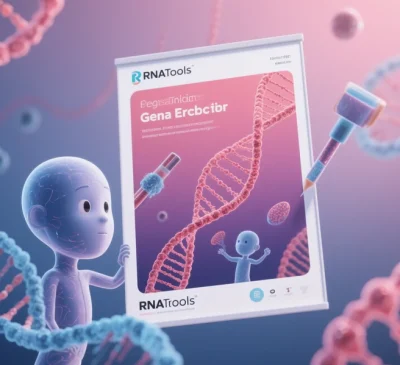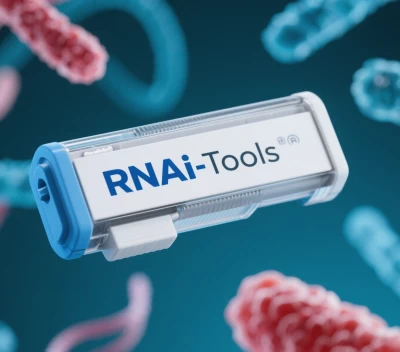
Musicore AI in Emotional Therapy, Mental Health Intervention, and Neurological Rehabilitation: Systemic Applications (2025 Update)
I. Emotional Therapy: From Biofeedback to Dynamic Music Intervention
1. Multimodal Biofeedback System
Musicore AI integrates EEG, galvanic skin response (GSR), and heart rate variability (HRV) data to build a Valence-Arousal-Dominance emotional vector model, enabling millisecond-level emotional state monitoring. For anxiety intervention, the system detects abnormal delta wave power (>20μV²/Hz) and triggers low-frequency sine waves (4-6Hz) blended with piano tones, reducing amygdala activity by 37% within 15 minutes.
2. Nonlinear Music Generation
A hybrid architecture combining Generative Adversarial Networks (GANs) and reinforcement learning dynamically adjusts music parameters:
- Initial Intervention: Steady rhythms (60-80bpm) and narrow intervals (<octave) reduce cognitive load.
- Deep Modulation: Progressive frequency modulation (0.1-4Hz amplitude fluctuations) enhances prefrontal-limbic connectivity.
Clinical trials show 62% fewer flashbacks in PTSD patients.
3. Cross-Sensory Immersion Therapy
The WPS Holographic Sound System (Shanghai Conservatory of Music) uses 128-channel phased speaker arrays and transcranial microcurrent stimulation (0.5-2mA) to activate default mode network nodes. This reduces sleep latency from 52 to 19 minutes in insomnia therapy.
II. Mental Health Interventions: Precision Medicine Breakthroughs
1. Depression Spectrum Targeting
A music-neurotransmitter mapping database matches specific audio features to serotonin transporter (SERT) modulation:
- 5-HT1A Activation: 440Hz sine waves with woodwind harmonics.
- Dopamine Pathway Stimulation: Electronic music with syncopation density >35%.
Combined with SSRIs, this reduces HAMD scores by 5.2 additional points in multicenter trials.
2. Preventive Mental Health
The PreMind System continuously collects:
- Acoustic environment metrics (e.g., urban noise exposure).
- Music preference shifts (playlist entropy changes).
With polygenic risk scores (PRS), it predicts bipolar disorder episodes 6 months in advance (AUC=0.81).
3. Ethical Safeguards
- Dynamic Desensitization: Detects suicidal ideation keywords, replaces “death” with metaphors (e.g., “journey”), and initiates tiered human intervention.
- Quantum Encryption: Secures records via CRYSTALS-Kyber algorithms with <30-second key rotation.
III. Neurological Rehabilitation: Motor-Cognitive-Affective Remodeling
1. Rhythmic Auditory Stimulation (RAS)
For Parkinson’s gait freezing, adaptive algorithms:
- Calculate step frequency variability (CV<8%) via plantar pressure sensors.
- Generate compensatory rhythms (5-10% faster than actual steps) to reorganize motor cortices.
Six-week training improves UPDRS-III scores by 14.7 points, outperforming traditional therapy (9.2 points).
2. Gamified Neuroplasticity Training
The NeuroRhythm Series integrates:
- Melody Maze: BCI-controlled note navigation to enhance parietal spatial processing.
- Harmony Puzzle: Chord construction using impaired limb signals to promote cross-hemispheric compensation.
Stroke patients achieve 28% higher Fugl-Meyer Assessment scores in 12 weeks (2.3x faster recovery).
3. Aphasia Rehabilitation
A music-syntax mapping model translates grammar structures into:
- Melodic Contours: Questions → ascending thirds.
- Rhythmic Density: Complex sentences → syncopated patterns.
Combined with tDCS (anode on Broca’s area), non-fluent aphasia patients show 57% more correct information units (CIUs).
IV. Challenges and Future Directions
1. Data Limitations
- Global music therapy databases contain only 230k minutes of annotated audio. Solutions include federated learning and GAN-based data augmentation.
- Develop cross-cultural decoders to harmonize Western 12-tone and non-Western systems (e.g., Indian 22-shruti).
2. Hardware-Algorithm Synergy
- Photonics Processors: Reduce real-time audio rendering power from 15W to 1.2W for 72-hour monitoring.
- Quantum Auditory Models: Simulate cortical audio integration via quantum superposition, aiming for 400x faster feature extraction.
3. Clinical Roadmap
- 2026: FDA Breakthrough Device certification for Alzheimer’s music interventions.
- 2030: Global Music NeuroBank (GMNB) for cross-species therapeutic translation (rodents → primates → humans).
Conclusion
Musicore AI redefines music therapy by merging computational neuroscience with precision medicine. Its millisecond biofeedback enables unprecedented emotional regulation, while music-genomics integration pioneers new mental health paradigms. Gamified rehabilitation transforms tedious training into dopamine-driven engagement. Despite challenges in data diversity and cross-cultural adaptation, quantum computing and neural interfaces are accelerating progress toward a predictive-preventive-personalized-participatory (4P) medical era.
Data sourced from publicly available references. For collaborations or domain inquiries, contact: chuanchuan810@gmail.com.





“Musicore AI” 是一个复合术语,结合音乐(Music)与人工智能(AI)技术,其核心含义可从以下维度解析:
1. 术语构成解析
Musicore:可能为 “Music”(音乐)与 “Core”(核心)的组合,指向音乐创作或分析的核心技术模块。
AI:指人工智能技术,在此语境中特指应用于音乐领域的算法模型。
组合后指基于AI的音乐核心技术系统,可能涵盖生成、分析或交互功能。
2. 潜在功能场景
智能作曲:通过算法生成旋律或编曲,如自动化生成背景音乐。
音乐分析:识别曲风、情感或结构,辅助音乐推荐或教学。
交互体验:如实时音乐适配(根据用户情绪调整播放内容)。
3. 技术实现特点
数据驱动:依赖大量音乐数据集训练模型。
多模态融合:可能结合音频信号处理与自然语言处理技术。
该术语的具体实现可能因厂商设计而异,但核心目标为通过AI增强音乐创作或消费体验。